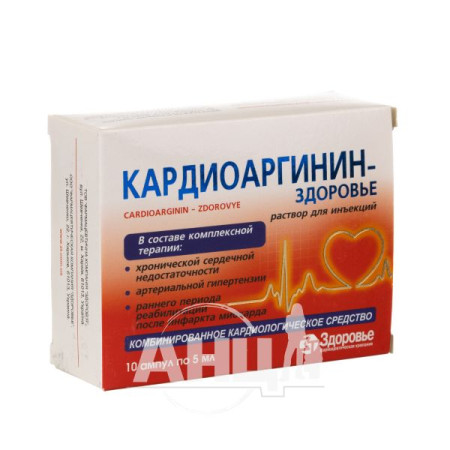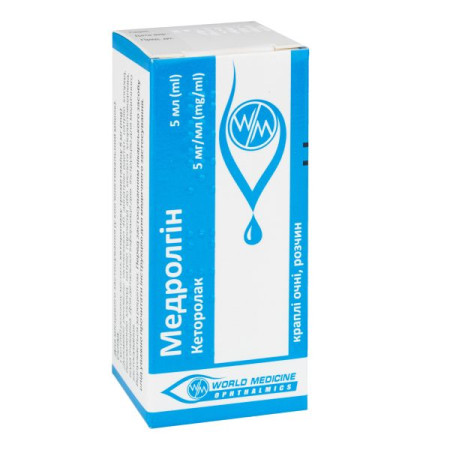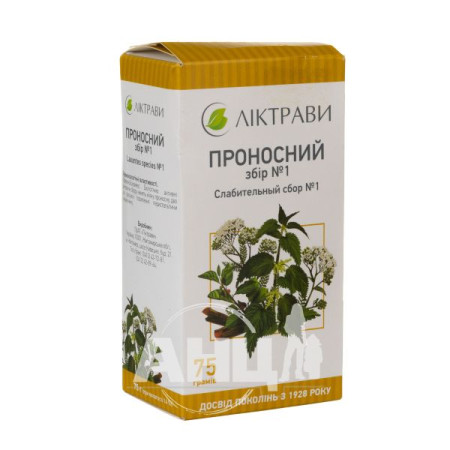Pallada eye drops solution 1 mg/ml dropper bottle 5 ml

Instructions Pallada eye drops solution 1 mg/ml dropper bottle 5 ml
Composition
active ingredient: olopatadine;
1 ml of solution contains olopatadine (as hydrochloride) 1 mg;
Excipients: benzalkonium chloride, anhydrous sodium hydrogen phosphate, sodium chloride, sodium hydroxide or diluted hydrochloric acid, water for injections.
Dosage form
Eye drops, solution.
Main physicochemical properties: transparent colorless solution.
Pharmacotherapeutic group
Means for use in ophthalmology. Antiedematous and antiallergic agents. ATX code S01G X09.
Pharmacological properties
Pharmacodynamics.
Olopatadine is a potent, selective antiallergic/antihistamine with several distinct mechanisms of action. It antagonizes the release of histamine (a major mediator of allergic reactions in humans) and prevents histamine-induced cytokine production by human conjunctival epithelial cells. In vitro data indicate that olopatadine acts on human conjunctival mast cells to inhibit the release of inflammatory mediators. Topical ophthalmic administration of olopatadine in patients with intact nasolacrimal ducts has been shown to reduce the nasal signs and symptoms that often accompany seasonal allergic conjunctivitis. It does not cause clinically significant changes in pupil diameter.
Preclinical data revealed no special hazard for humans based on conventional studies of safety, pharmacology, repeated dose toxicity, genotoxicity, carcinogenic potential, and toxicity to reproduction.
Animal studies have shown developmental delays in pups of lactating dams exposed to systemic doses of olopatadine at doses exceeding the maximum recommended human ophthalmic dose. Olopatadine has been detected in the milk of lactating rats following oral administration.
Pharmacokinetics.
Olopatadine is absorbed systemically, like other topical drugs. However, with topical administration, systemic absorption is minimal and plasma concentrations range from below the level of quantification (<0.5 ng/mL) to 1.3 ng/mL. These concentrations are 50- to 200-fold lower than those achieved with oral administration at well-tolerated doses.
Oral pharmacokinetic studies have shown that the plasma half-life of olopatadine is approximately 8–12 hours. It is excreted primarily by the kidneys. Approximately 60–70% of the dose was recovered in the urine as the active substance. Two metabolites, mono-desmethyl and N-oxide, were detected in the urine at low concentrations.
Since olopatadine is excreted in the urine, mainly as unchanged active substance, its pharmacokinetics are altered in renal impairment, with peak plasma concentrations in patients with severe renal impairment (mean creatinine clearance 13 ml/min) being 2-3 times higher than in healthy adult volunteers. When haemodialysis was performed in patients after oral administration of 10 mg olopatadine, its plasma concentration was significantly lower on the day of haemodialysis than on the day when it was not performed, suggesting that olopatadine was removed during haemodialysis.
In comparative pharmacokinetic studies of oral administration of a 10 mg dose in young subjects (mean age 21 years) and elderly subjects (mean age 74 years), no significant differences in plasma concentrations, protein binding, or urinary excretion of unchanged active substance and metabolites were found.
Studies of oral olopatadine have been conducted in patients with severe renal impairment. The results suggest that somewhat higher plasma concentrations of olopatadine can be expected in this patient population. Since plasma concentrations of olopatadine following topical ophthalmic administration are 50-200 times lower than those achieved orally at well-tolerated doses, no dosage adjustment is necessary for the elderly or patients with renal impairment. Hepatic metabolism is not a major route of elimination for olopatadine. Therefore, no dosage adjustment is necessary for patients with hepatic impairment.
Indication
Treatment of seasonal allergic conjunctivitis.
Contraindication
Hypersensitivity to olopatadine or to any of the excipients of the drug.
Interaction with other drugs and other types of interactions.
No studies have been conducted to study the interaction of olopatadine with other drugs.
In vitro studies have shown that olopatadine does not inhibit the metabolic reactions of cytochrome P450 isoenzymes 1A2, 2C8, 2C9, 2C19, 2D6, 2E1 and 3A4. These results indicate that olopatadine does not cause metabolic interactions with other active substances when administered concomitantly.
Interaction with other medicinal products and other types of interactions
In vitro studies have shown that olopatadine does not inhibit the metabolic reactions of cytochrome P450 isoenzymes 1A2, 2C8, 2C9, 2C19, 2D6, 2E1 and 3A4. These results indicate that olopatadine does not cause metabolic interactions with other active substances when administered concomitantly.
Application features
The drug is an antiallergic/antihistamine that is applied topically but is absorbed systemically. If any signs of serious reactions or hypersensitivity occur, the drug should be discontinued.
Contact lenses
Patients should be advised to wait 15-20 minutes after instillation of the drug before inserting contact lenses. The drug should not be used while wearing contact lenses.
Do not touch the pipette tip to any surface to prevent contamination of the solution.
Pallada contains benzalkonium chloride, which may cause eye irritation. Benzalkonium chloride has also been reported to cause punctate keratopathy and/or toxic ulcerative keratopathy. Patients with dry eye syndrome or corneal lesions who use the drug frequently or for a long time should be carefully monitored.
Use during pregnancy or breastfeeding
Pregnancy
There are no or limited amount of ophthalmic data from the use of olopatadine in pregnant women. Animal studies have been reported to show reproductive toxicity following systemic administration. Olopatadine is not recommended for use in pregnant women and women of childbearing potential not using contraception.
Breast-feeding
Animal studies have been reported to show that olopatadine is excreted in breast milk after oral administration. A risk to the newborn/infant cannot be excluded. The drug should not be used during breast-feeding.
Reproductive function
There have been no reports of studies of the effects of olopatadine on human reproductive function following topical ophthalmic administration.
Ability to influence reaction speed when driving or using other mechanisms
As with other eye drops, temporary blurred vision or other visual disturbances may affect the ability to drive or use machines. If blurred vision occurs during instillation, the patient should wait until vision clears before driving or using machines.
Method of administration and doses
The medicine is intended for topical use only.
Instill 1 drop of the drug into the conjunctival sac of the affected eye(s) 2 times a day (at 8-hour intervals). If necessary, treatment may last up to 4 months.
Use in elderly patients.
There is no need for dosage adjustment for this category of patients.
Use in patients with impaired liver and kidney function.
Olopatadine eye drops have not been studied in patients with hepatic or renal impairment. However, no dosage adjustment is necessary in patients with hepatic or renal impairment (see Pharmacology: Pharmacokinetics).
To prevent contamination of the dropper tip and contents of the bottle, care should be taken not to touch the eyelids, surrounding areas, or other surfaces with the dropper tip. The dropper tip should be tightly closed after each use.
If more than one ophthalmic agent is applied topically, the interval between their applications should be at least 5 minutes. Eye ointments should be applied last.
Children.
The medicine can be used in children aged 3 years and over in the same dosage as adults.
The safety and efficacy of olopatadine in children under 3 years of age have not been studied. Data are not available for this age group.
Overdose
There are no data on overdose of olopatadine in humans after accidental or intentional ingestion. Olopatadine has shown low acute toxicity in animals. Accidental ingestion of the entire vial would result in a maximum systemic exposure of 5 mg olopatadine. This exposure would occur at a final dose of 0.5 mg/ml in a child weighing 10 kg assuming 100% absorption.
QT prolongation in dogs was observed only at doses significantly in excess of the maximum human dose, indicating that QT prolongation is unlikely to occur in clinical practice. In a study of 102 healthy male, female, and elderly volunteers administered 5 mg olopatadine orally twice daily for 2.5 days, a slight increase in QT interval was observed compared to placebo. In this study, the maximum plasma concentrations of olopatadine (35 to 127 ng/mg) were at least 70-fold greater than those observed with topical olopatadine for effects on cardiac repolarization.
In case of overdose, appropriate examination and treatment of the patient is necessary.
Side effects
In clinical trials involving 1680 patients, olopatadine was administered 1 to 4 times daily to both eyes for 4 months as monotherapy or as adjunctive therapy to loratadine 10 mg. Adverse reactions related to olopatadine were observed in approximately 4.5% of patients; however, only 1.6% of these patients were withdrawn from clinical trials due to these adverse reactions. No serious ophthalmic or systemic adverse reactions related to olopatadine were reported during clinical trials. The most common adverse reaction with olopatadine was eye pain, with an incidence of 0.7%.
The following adverse reactions have been reported during clinical trials and in the post-marketing period and are classified according to MedDRA system organ class and frequency: very common (≥1/10), common (≥1/100, <1/10), uncommon (≥1/1,000, <1/100), rare (≥1/10,000, <1/1,000), very rare (<1/10,000), not known (frequency cannot be estimated from the available data). Within each grouping, adverse reactions are presented in order of decreasing seriousness.
Infections and infestations:
uncommon – rhinitis.
On the part of the immune system:
unknown - increased sensitivity, facial swelling.
From the nervous system:
often - headache, dysgeusia; infrequently - dizziness, hypoesthesia; unknown - drowsiness.
On the part of the organs of vision:
common - eye pain, eye irritation, dry eye, abnormal eye sensitivity; uncommon - corneal erosion, corneal epithelial damage, corneal epithelial disorder, punctate keratitis, keratitis, corneal discoloration, eye discharge, photophobia, blurred vision, decreased visual acuity, blepharospasm, ocular discomfort, eye itching, conjunctival follicles, conjunctival disorder, foreign body sensation in the eye, increased lacrimation, eyelid erythema, eyelid edema, eyelid disorder, ocular hyperemia; unknown - corneal edema, eye edema, eye swelling, conjunctivitis, mydriasis, visual impairment, eyelid margin scaling.
From the respiratory system, chest organs and mediastinum:
Common: dry nose; unknown: dyspnea, sinusitis.
From the digestive tract:
unknown - nausea, vomiting.
Skin and subcutaneous tissue disorders:
uncommon – contact dermatitis, burning sensation on the skin, dry skin; unknown – dermatitis, erythema.
On the part of the body as a whole and reactions at the injection site:
often - increased fatigue; unknown - asthenia, malaise.
In patients with significant corneal damage, cases of corneal calcification have been reported very rarely with the use of eye drops containing phosphates.
Reporting of suspected adverse reactions.
Reporting suspected adverse reactions that occur after the marketing authorisation of a medicinal product is very important. This allows the benefit/risk balance of the medicinal product to be continuously monitored. Healthcare professionals are asked to report any suspected adverse reactions via the national reporting system.
Expiration date
3 years.
After first opening the bottle, the drug can be used for 28 days.
Storage conditions
Store at a temperature not exceeding 25 °C in a place inaccessible to children.
Packaging
5 ml solution in a dropper bottle; 1 dropper bottle in a cardboard box.
Vacation category
According to the recipe.
Producer
WORLD MEDICINE ILACH SAN. VE TIJ. A.Sh./WORLD MEDICINE ILAC SAN. VE TIC. AS
Location of the manufacturer and address of its place of business
15 Temmuz Mahallesi Cami Yolu Caddesi No:50 Gunesli Bagcilar/Istanbul, Turkey/ 15 Temmuz Mahallesi Cami Yolu Caddesi No:50 Gunesli Bagcilar/Istanbul, Turkey.
Applicant
WORLD MEDICINE, LLC, Ukraine.
Address
15 Temmuz Mahallesi Cami Yolu Caddesi No:50 Gunesli Bagcilar/Istanbul, Turkey/ 15 Temmuz Mahallesi Cami Yolu Caddesi No:50 Gunesli Bagcilar/Istanbul, Turkey. Applicant. WORLD MEDICINE OPHTHALMICS ILACLARI LTD. STI., Turkey/ WORLD MEDICINE OPHTHALMICS ILACLARI LTD. STI., Turkey.
There are no reviews for this product.
There are no reviews for this product, be the first to leave your review.
No questions about this product, be the first and ask your question.











